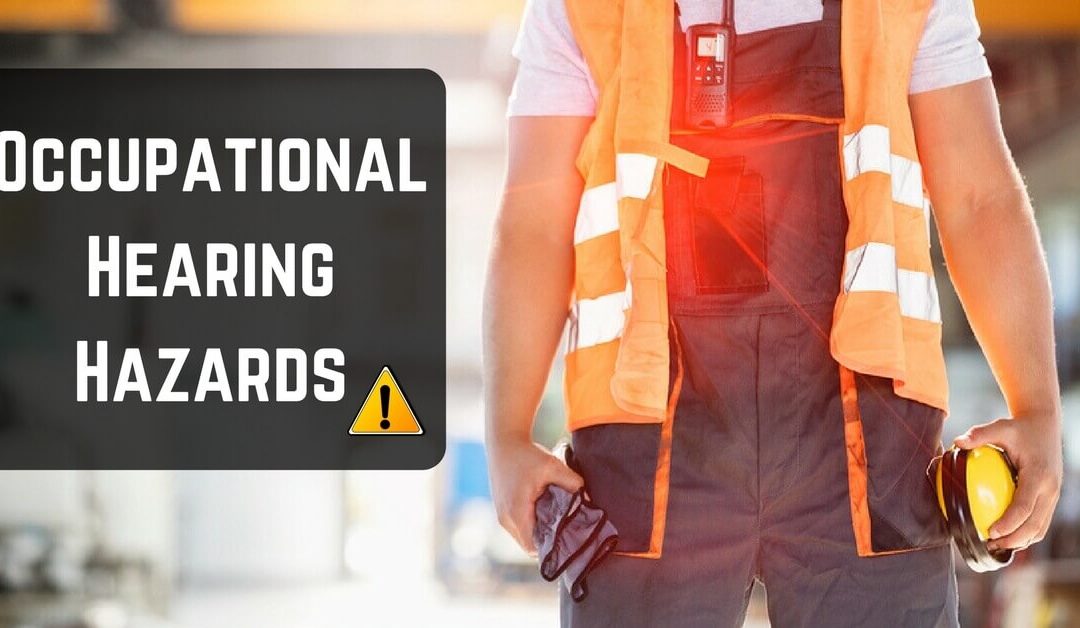Hearing loss is one of the most common medical conditions in the US, affecting one third of people over the age of 65 and 50% of people over the age of 75. Though one main cause of hearing loss is the natural process of aging, another cause is exposure to loud noise.
Noise-induced hearing loss occurs when we are exposed to dangerous levels of noise, either in a one-time event (gunshot, explosion, etc.) or over the long term, such as exposure in occupational settings. In the US, 60% of the workforce experiences some degree of hearing loss, including 60% of veterans returning from combat zones report hearing loss and tinnitus (ringing of the ears).
Unlike other forms of hearing loss, noise-induced hearing loss is preventable. Here, we’ll take a look at the danger of loud sounds and occupational hearing hazards.
Noise in the Workplace
According to the Occupational Safety and Health Administration (OSHA), approximately 30 million people are exposed to hazardous noise in the workplace. They report that noise-related hearing loss is “one of the most prevalent occupational health concerns in the US for more than 25 years…thousands of workers suffer from preventable hearing loss due to high workplace noise levels.”
Hearing specialists believe that volumes over 85 decibels (dB), for more than 8 hours a day, have the potential to cause damage to hearing. The louder the sounds or the longer the exposure, the greater is the risk to your hearing. To understand decibels, average conversations measures around 60 dB, while rock concerts tend to average around 120 dB. Gunshots range from 140 to 190 dB, while power tools range between 110 to 130 dB. Sports fans are exposed to high volumes as well, as sports stadiums tend to clock in at 120 to 140 dB.
In terms of occupation, many jobs expose people to dangerous levels of noise. According to the Center for Disease Control’s National Institute for Occupational Safety and Health, “Approximately 22 million U.S. workers [are] exposed to hazardous noise levels at work.” Noise-induced hearing loss is permanent, though it can be treated with hearing aids. Long-term exposure to dangerous levels of sound in the work place causes not only hearing loss, but also stress, reduced productivity, and may also lead to workplace accidents and injuries.
What are the Loudest Occupations?
You may be surprised by the list! There are obvious ones of course, such as construction or manufacturing work. But did you stop to think that your dentist or a nursery school teacher might be at risk for hearing loss due to their profession? Below are some of the loudest occupations.
Nursery school teacher, hair dresser – 85 dB: Schools are noisy environments, and studies have measured noise levels to fall anywhere between 40 to 105 dB. Additionally, working with young children means the exposure to the higher-frequency sound of their voices, which also may cause damage to one’s hearing.
Though hair styling is usually considered one of the least stressful jobs, the daily exposure to hair dryers, which clock in at 85 dB, can do serious damage after eight hours. Luckily, hair dryers are used in short bursts, but damage could accumulate over time. Earplugs are recommended.
Manufacturing/construction – 90 dB: According to Dangerous Decibels, a group that raises awareness on noise-induced hearing loss, “A bulldozer that is idling (note that this is idling, not actively bulldozing) is loud enough at 85 dB that it can cause permanent damage after only 1 work day (8 hours).” The machinery in manufacturing warehouses average at 90 dB; coupled with the open floor plan and concrete floor and structure, long work hours could lead to hearing loss.
Agricultural worker – 107-112 dB: Working in a garden might seem idyllic, until you consider the weed trimmers and lawn mowers that are used to manicure landscapes. Gardeners should consider custom hearing protection when using these tools, which usually measure at 107 dB. Similarly, farmers are exposed to the 112 dB of tractors regularly, and studies have shown that by age 30, 25% of male farmers experience hearing loss.
Air traffic controller – 140 dB: Air traffic controllers and ground control staff at airports are exposed to the loudest noise. Most airplane engines measure at 140 dB, while some jet planes hit as high as 190 dB (which will cause immediate damage to hearing). Most air traffic controllers and ground staff are provided with custom ear protection.
Protect Your Hearing & Treat Hearing Loss
If you are consistently exposed to loud noise in your occupation, make sure you are following your employer’s guidelines for protective ear wear. If your employer does not offer custom ear protection, consider getting your own custom ear wear and learn more about federal regulations regarding workplace noise here.
Audiologists and hearing professionals offer custom ear protection, made of molds of your ear canals. These provide you protection from the higher decibels that may cause hearing loss over the long term, while giving you access to the sounds you need to hear to be productive on the job.
Furthermore, it is important to take annual hearing exams to establish a baseline for your hearing abilities. If you work in a loud environment, consider seeing an audiologist or hearing specialist in your area.

